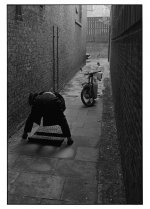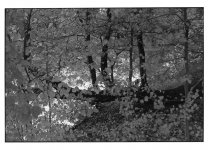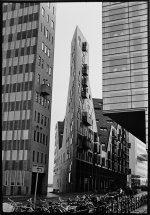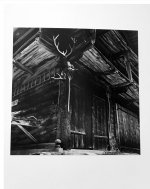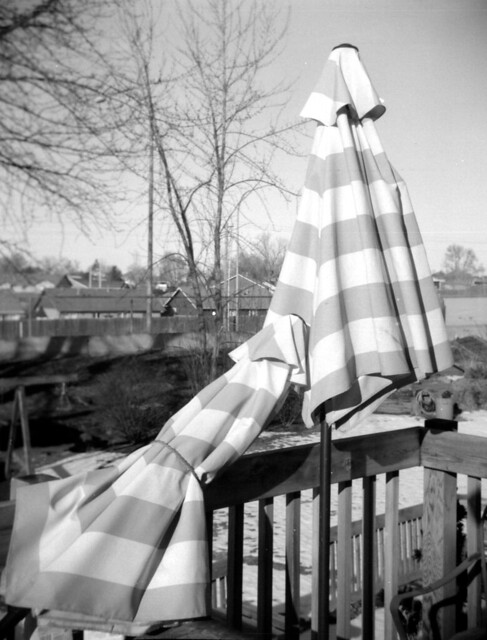Bingley
Mentor
Yes, exactly. I meter at 250 and develop at 400. Gives and extra stop or so of exposure, which works well for Tri-X.
Erik van Straten
Mentor
telenous
Well-known
I love your TMAX 400 + Perceptol examples , Steve. I am mightily tempted to try this combo out. Perceptol is one developer I 've never tried.
After trying every developer I could get my hands on when I first started, I 've settled for a long, long while with plain vanilla TriX + D76 (1+1). Is that the most used combination in black & white photography? I have a feeling it may very well be.
Kodak TriX 400, D76 1+1
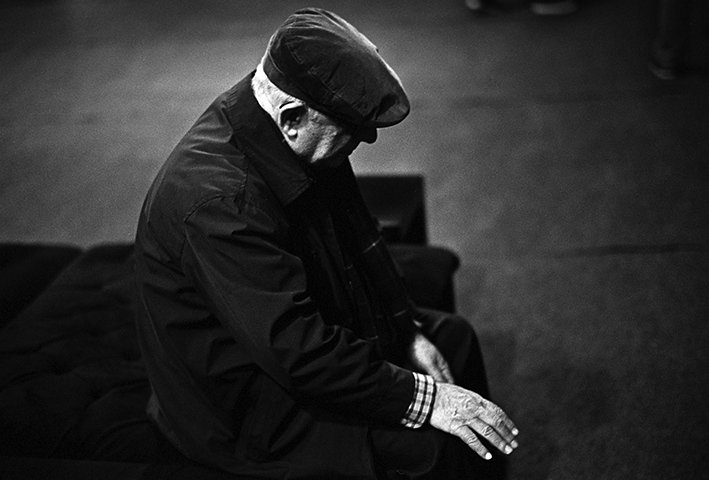 Untitled by Alkis Plithas, on Flickr
Untitled by Alkis Plithas, on Flickr
More recently I switched to Xtol. I don't love it but it is environmentally friendlier than D76 and as a bonus you get a mild speed boost without grain increase.
Kodak TriX 400, Xtol stock solution.
 Untitled by Alkis Plithas, on Flickr
Untitled by Alkis Plithas, on Flickr
For whatever reason, Xtol has also worked for me much better than D76 with Ilford FP4+.
Ilford FP4+, Xtol 1+1
 Returning home by Alkis Plithas, on Flickr
Returning home by Alkis Plithas, on Flickr
Continued...
After trying every developer I could get my hands on when I first started, I 've settled for a long, long while with plain vanilla TriX + D76 (1+1). Is that the most used combination in black & white photography? I have a feeling it may very well be.
Kodak TriX 400, D76 1+1
 Untitled by Alkis Plithas, on Flickr
Untitled by Alkis Plithas, on FlickrMore recently I switched to Xtol. I don't love it but it is environmentally friendlier than D76 and as a bonus you get a mild speed boost without grain increase.
Kodak TriX 400, Xtol stock solution.
 Untitled by Alkis Plithas, on Flickr
Untitled by Alkis Plithas, on FlickrFor whatever reason, Xtol has also worked for me much better than D76 with Ilford FP4+.
Ilford FP4+, Xtol 1+1
 Returning home by Alkis Plithas, on Flickr
Returning home by Alkis Plithas, on FlickrContinued...
telenous
Well-known
...Continued from above
I am always impressed with Ilford DDX, especially for push developing, but it's hard to get and expensive when you do. I have used it very infrequently the last few years. I think it works particularly well with Ilford HP5+ 400 pushed 1-1.5 stops. My layman's explanation is that HP5+ 400 is a bit less contrasty than TriX 400 to begin with, so it is a tad more agreeable when increasing development time/negative density. But that's just my hunch.
Ilford HP5+ 400, DDX 1+9
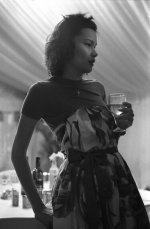 Untitled by Alkis Plithas, on Flickr
Untitled by Alkis Plithas, on Flickr
(All of the above have been mildly edited for contrast.)
I am always impressed with Ilford DDX, especially for push developing, but it's hard to get and expensive when you do. I have used it very infrequently the last few years. I think it works particularly well with Ilford HP5+ 400 pushed 1-1.5 stops. My layman's explanation is that HP5+ 400 is a bit less contrasty than TriX 400 to begin with, so it is a tad more agreeable when increasing development time/negative density. But that's just my hunch.
Ilford HP5+ 400, DDX 1+9
 Untitled by Alkis Plithas, on Flickr
Untitled by Alkis Plithas, on Flickr(All of the above have been mildly edited for contrast.)
Last edited:
Erik van Straten
Mentor
571514m3
Established
Love everything about this even the light leak! Reminds me of so many of early photos with light leaks and the feeling of the scene is really nice and genuine. But to Rodinal: My favourite and ONLY developer. For decades I did the 1:50 thing with TriX, then just before Covid I started 1:100 stand developing. I like it.View attachment 4815849
Kentmere 100, developed in Rodinal 1:50, 15 minutes at 20 degrees C. I was testing a Kiev 4 camera - it has a light leak.
Could someone post Rodinal stand developing results?
571514m3
Established
+1 PanThose are very useful notes, Pan, as well as very nice photos! I especially like the tonality and composition of the last photo; I have used Foma 200 a bit in the past and quite liked it. Still got some, so I’ll try your recipe!
Really nice and well done! I'm just hooked on the tonality Rodinal brings out.
Harry the K
Established
Same here with Rodinal. Amsterdam Flatiron on Tri-X.But to Rodinal: My favourite and ONLY developer.
Attachments
Steinberg2010
Well-known
Thanks - so the goal is to lift the shadows a little?Yes, exactly. I meter at 250 and develop at 400. Gives and extra stop or so of exposure, which works well for Tri-X.
Coldkennels
Barnack-toting Brit.
I have a love/hate relationship with Rodinal.But to Rodinal: My favourite and ONLY developer. For decades I did the 1:50 thing with TriX, then just before Covid I started 1:100 stand developing. I like it.
Could someone post Rodinal stand developing results?
For the films it works with, it's just incredibly special. The tonality, the sharpness, the way it renders grain? I love it. But with some films... it's just best left on the shelf.
I'll try to walk through some of my experiences with it. All of the following use an agitation pattern with 30 seconds initial agitation followed by 15 seconds a minute:
APX 100 (the 2000s/early 2010s formula)
(Developed for 13:00 at 20ºC, 1:50 dilution)

(Contax II, Jupiter 9)
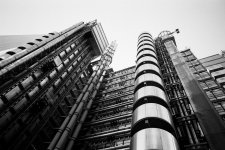
(Leica If, Voigtlander 15/4.5 Super-Wide Heliar)
This was my go-to for a long, long time. Contrast was always exactly what I wanted, grain was never too wild, and it was a very predictable combination. But with this being gone (I believe current APX is a repackaged Kentmere?), I had to look for something else, so...
Fomapan 100
(developed for 8:00 at 20ºC, 1:50 dilution)

(Leica IIIg, Summar)
This is my new favourite (and, thankfully, cheap) all-purpose option. I've only gone through a few rolls but I've yet to have a single shot where the contrast range wasn't perfect and the midtones weren't bang where I wanted them.
Ilford Pan F+
(Developed for 11:00 at 20ºC, 1:50 dilution)

(Leotax T2L, Summar)
If I was willing to carry around a tripod more I'd use this combo a lot. I've heard people say Pan F+ is too contrasty, but Rodinal seems to smooth that out a lot. Lovely mid-tones, easy to scan, even easier to print.
And now onto the oddities...
Fomapan 400
(Developed for 11:00 at 20ºC, 1:50 dilution)
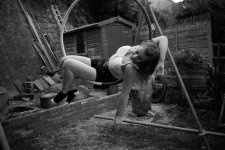
(Leica IIIf, Canon 35/1.8)
I loved this film in LC29, but Rodinal has always been hit-and-miss. If the light is good and the exposure is bang-on, it's not too bad. Usually you get something more like this in sub-optimal light - very heavy grain and shadows block up easily.
Pulled a stop, exposed at 200ISO, and developed for 10:00 at 20º with the same 1:50 dilution works a bit better:
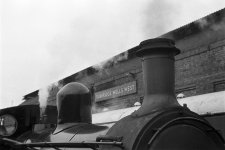
(Leica IIIg, Leonon 50/2)
But overall, I'd give Fomapan 400 a miss in Rodinal. It's a look, but there's better options. The same with HP5+, but I don't have any scans on hand - I gave up on that combo a long time ago.
However, there is one 400 ISO film that does work tolerably well with Rodinal...
Rollei Retro 400S
(Developed for 10:30 at 20ºC, 1:25 dilution)

I've shot a couple of rolls of this now in Rodinal and it's... okay. It can still be hit-and-miss, but I generally like the hits with this combo more than I do with Rodinal and any other 400 ISO film. And like the Fomapan 400, you have to be careful to avoid under-exposure, but it's more useable overall. I suspect it'd still be better with LC29 or another HC-110 analog, though.
Finally, the subject of stand developing. I've tried and tested a bunch of claims. Frankly, I think it's crap. Yes, some people get it to work well, but I don't think it has many real benefits. The one good thing I can say is that it's handy if you have no idea how to develop the film (or what the film is). For instance, this is with Eastman Fine Grain 5302, a duplicating film:
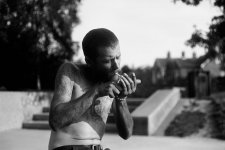
(Leica IIIg, Summicron)
Can't find a developing time? Stand dev it with a 1:100 dilution for an hour with 30 seconds of agitation to start, and you'll get something. Sometimes, it comes out really well - for instance, I've never bothered dialling in a proper development scheme for 5302 as stand dev just works - but the idea that it magically balances out multiple EIs on the same roll is utter nonsense. You can see what I mean in this album from the first roll of 5302 I tried some years back: Eastman Fine Grain 5302 Test
You can just about get away with some over-exposure, but if some of the shots are under-exposed, stand developing won't miraculously save them.
As for whether it's better than regular developing? Eh. Here's one with XP2, stand developed at 1:100:
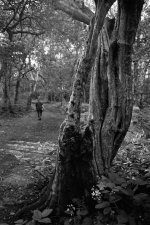
(Leotax T2L, Voigtlander 28mm Color Skopar)
And here's another shot on XP2, this time developed with Rodinal using standard development at 1:25 dilution for 18:00 (!):
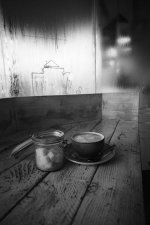
(Leotax T2L, Voigtlander 21mm Color Skopar)
Not only do I prefer the look of the regular development, but it's more consistent. Stand development works if you can keep the developer at the same temperature for an hour. I can't - the temperature in my house can fluctuate from 5ºC to 35ºC throughout the year, and stand developing in a house at 5ºC will give you a very different result to doing it in a house at 35ºC, even if you start by mixing it at 20ºC!
Moreover, stand dev has a nasty habit of causing this:
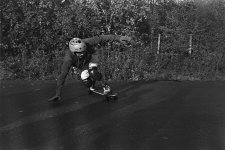
(Contax II, Jupiter 12)
I find this can happen with Rodinal when developing normally if your agitation scheme is bad, but streaking is horrendously common with stand dev. To me, it's just not worth the risk.
Anyway, thank you for coming to my TEDTalk on Rodinal. Sorry it ran on so long, but hopefully it helps... someone?
steveyork
Well-known
In my experience, semi-stand yields far more consistent results, and everyone has their own formula, but I've never been able to avoid bromide streaks with pure stand. That's just me though, everyone's different.
Coldkennels
Barnack-toting Brit.
I suspect you're right about the semi-stand. The streaking seems to be caused by whatever happens in the first minute - how quickly or smoothly you pour the developer in, how much you agitate, and how smooth or violent the agitation is. Some years back I did some experiments trying to figure it out, but eventually, I just gave up. It's just not worth the time when it still doesn't solve the issue of maintaining temperature - and having to wait a whole hour before you can fix the film. I'd rather just go for normal development when I can.In my experience, semi-stand yields far more consistent results, and everyone has their own formula, but I've never been able to avoid bromide streaks with pure stand. That's just me though, everyone's different.
Deardorff38
Mentor
wjlapier
Well-known
Hans Berkhout
Well-known
PMK, Tri-X, Fuji GSW690iiiView attachment 4815899
Hans Berkhout
Well-known
I don't buy the oversized commercial developers. I grew up with Rodinal stock in 250ml bottles- 1:75 lasted long enough, I'm a low volume shooter.
D23 1:1 @24C is all I need. I've used pyro with pleasure in the past, tried it again the other day and wasted a PanF40 35mm film. Subsequently took some quality control shots through a Wallace Expodisc ( a habit with new film or developer batches) and couldn't believe the mess, the smudges (ignore uneven light, Newton, dust etc). Destilled water always, chemicals disolved @ about 50F. I'd be interested in comments....
I'll post D23 and a pryo developed shot plus the disaster.
D23:
- imghansberkhout894 by hans p berkhout, on Flickr
imghansberkhout894 by hans p berkhout, on Flickr
WD2D pyro: imghansberkhout762 by hans p berkhout, on Flickr
imghansberkhout762 by hans p berkhout, on Flickr
Pyro trouble: imghansberkhout914 by hans p berkhout, on Flickr
imghansberkhout914 by hans p berkhout, on Flickr
D23 1:1 @24C is all I need. I've used pyro with pleasure in the past, tried it again the other day and wasted a PanF40 35mm film. Subsequently took some quality control shots through a Wallace Expodisc ( a habit with new film or developer batches) and couldn't believe the mess, the smudges (ignore uneven light, Newton, dust etc). Destilled water always, chemicals disolved @ about 50F. I'd be interested in comments....
I'll post D23 and a pryo developed shot plus the disaster.
D23:
-
 imghansberkhout894 by hans p berkhout, on Flickr
imghansberkhout894 by hans p berkhout, on FlickrWD2D pyro:
 imghansberkhout762 by hans p berkhout, on Flickr
imghansberkhout762 by hans p berkhout, on FlickrPyro trouble:
 imghansberkhout914 by hans p berkhout, on Flickr
imghansberkhout914 by hans p berkhout, on Flickrmarkjwyatt
Well-known
35mm Bergger Pancro 400 developed in HC110. I always try for HC110 B (1:31, "old syrup"), but if the time < 5 min, I go up one dilution, and this can be effected by water temperature. This is likely "B", but I am not sure. Agitation, 5-turns every 30 min. Carl Zeiss 50mm f1.8 Ultron mounted on a Fujica ST 705w. Metered at 320, developed for 400.

Hill Trees by Mark Wyatt, on Flickr
This one was developed in DDX by The Darkroom. Contax iia; Carl Zeiss Optron 50mm Sonnar f2. I think I metered for 320, but did not push/pull w/ The Darkroom.

fence by Mark Wyatt, on Flickr

Hill Trees by Mark Wyatt, on Flickr
This one was developed in DDX by The Darkroom. Contax iia; Carl Zeiss Optron 50mm Sonnar f2. I think I metered for 320, but did not push/pull w/ The Darkroom.

fence by Mark Wyatt, on Flickr
Deardorff38
Mentor
Well we've got lots of photos posted with associated developer info. Which made me ponder...How do we end up using what we do? In my case, I was just getting back into printing in the darkroom (late 80s)....& was not satisfied with the results. I much admired the photographs and prints of a Calgary friend of mine, Dario Ronco (you likely remember him Hans B). Dario offered to process a roll of film for me in PMK. From that point, (most likely serendipity) I started having less problems with featureless skies and blownout highlights. I just stopped looking and trying a myriad of developers after that & seemed to have less of a struggle, and fewer difficult negatives.
Fuji GSW 690lll, Tri-X Pyrocat HD, print on Forte Polygrade FB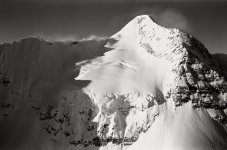
Fuji GSW 690lll, Tri-X Pyrocat HD, print on Forte Polygrade FB

Last edited:
p.giannakis
Pan Giannakis
@Coldkennels you basically explained all the reasons why I stopped using Rodinal. With fast films results are grainy (even more so if underexposed) and terrible streaks when i did stand developing. Also, I found that i had to expose Tri-x to 250asa to get a good negative. Never used it with slow films thought. Apparently slow films are its remit.
Bingley
Mentor
Lifting the shadows is partly it, but I also like what the extra stop or so of exposure does to the mid-tones. I find that I have to make fewer adjustments in Lightroom. Here are some samples from Prague, taken in June 2021 with a Rollei 35S camera. All three were taken on Tri-X that I metered at 250, and then developed in Legacy Pro 110 dil. h for 9 minutes, which is the dilution for Tri-X at 400:Thanks - so the goal is to lift the shadows a little?
 Leaning in. by Steve Macfarlane, on Flickr
Leaning in. by Steve Macfarlane, on Flickr Wenceslas Square by Steve Macfarlane, on Flickr
Wenceslas Square by Steve Macfarlane, on Flickr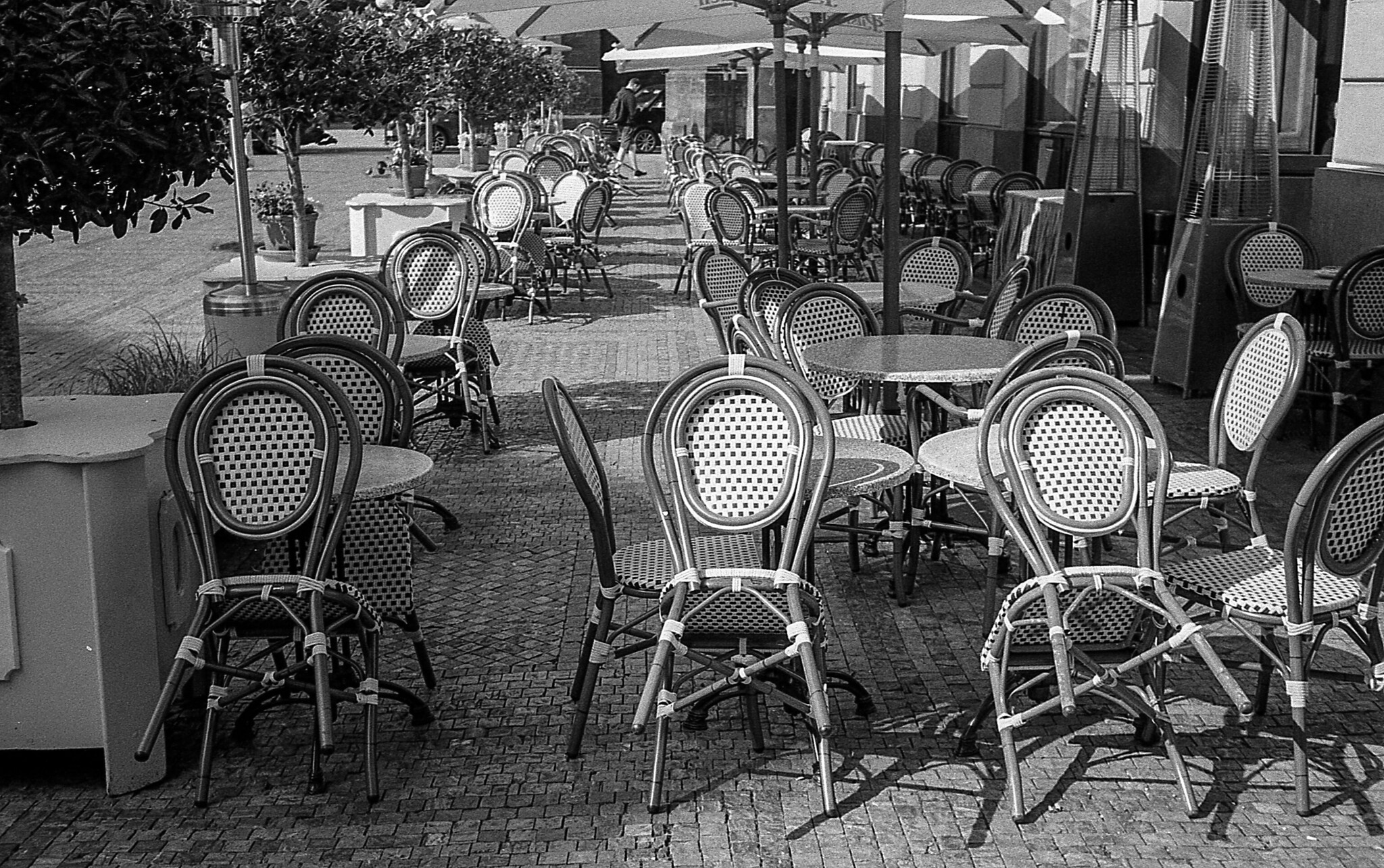 Waiting to open. Na Porici, Prague. by Steve Macfarlane, on Flickr
Waiting to open. Na Porici, Prague. by Steve Macfarlane, on Flickr
Share:
-
This site uses cookies to help personalise content, tailor your experience and to keep you logged in if you register.
By continuing to use this site, you are consenting to our use of cookies.


